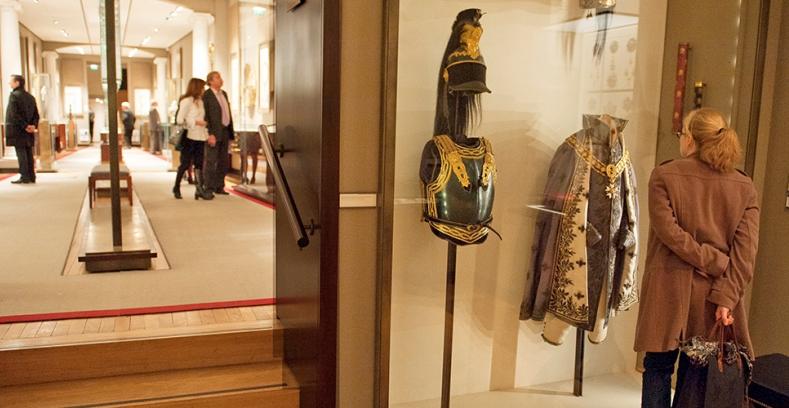
The museum’s treasures
The Museum of the Legion of Honor harbors exceptional objects. Beyond their intrinsic qualities, these works of art exemplify the values carried forward by the orders and decorations throughout the course of history.
Discover some of these multi-faceted treasures: behind each of them lives a historical epic, a human adventure, a famous or anonymous destiny…
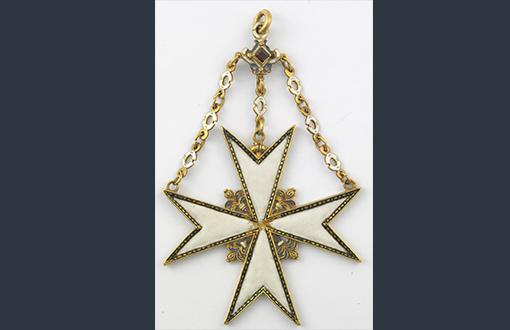
Maltese cross, 16th century
The white eight-pointed cross has been, since the crusades, the badge of the knights of the Order of Saint John of Jerusalem, which became the Order of Malta in the sixteenth century. Their organization, structured to serve an ideal, was to inspire the princes of Europe when they wished to gather a loyal elite around them.
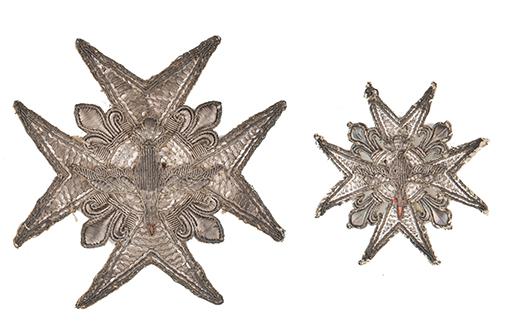
Plaques of the order of the Holy Spirit from King Louis XVI and the Dauphin, 18th century
The plaque bearing the dove in its center is one of the everyday emblems of the knights of the Order of the Holy Spirit. These inspiring relics were unsewn from the garb of the King and the Dauphin in September 1791, after the Constituent Assembly abolished the royal orders on August 6.
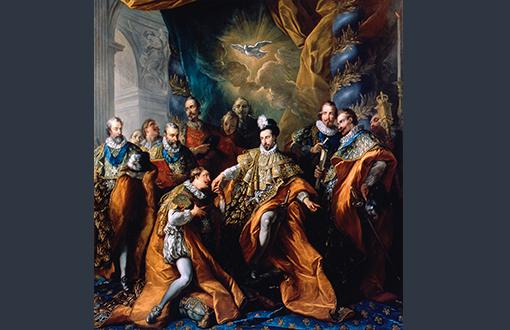
Jean-Baptiste Van Loo (1684-1745), on loan from the museum of the Louvre
This monumental work makes us relive the first ceremony of the most prestigious of the royal orders of the Old Regime. Henri III, founder of the Order, here receives the oath of fidelity of the Duke of Nevers. The great coats sown with flames would remain the spectacular ceremonial garment of the order throughout its history.
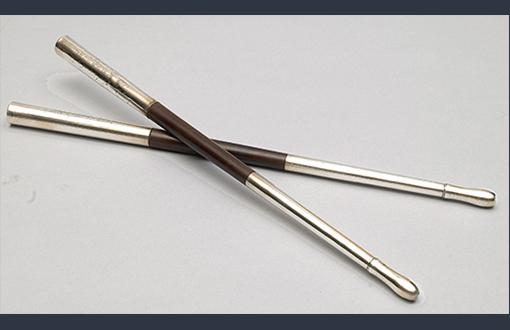
The drumsticks of honor of the drummer of Arcole, 1802
The Arms of Honor, established by Napoleon Bonaparte at the end of 1799, were the first step toward the creation of the Legion of Honor. They bear the name of the beneficiary and the story of his feat, such as these drumsticks reserved for drummers. At Arcole, André Estienne, age 16, crossed the river swimming and beat the “charge” on the other shore, spreading panic among the enemies.
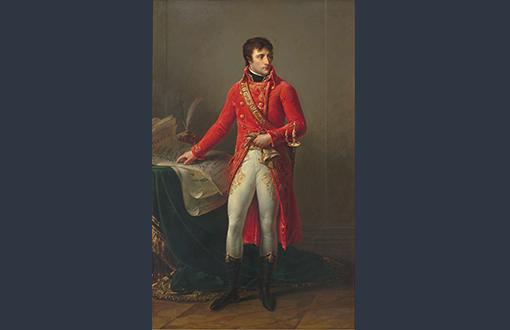
Antoine-Jean Gros (1771-1835), 1802
This emblematic portrait of the First Consul was offered to the Second Consul, Cambacérès, and adorned the formal dining room of his residence. A political image painted in the very year the Legion of Honor was founded, this work represents Bonaparte in the full glory of his youth.
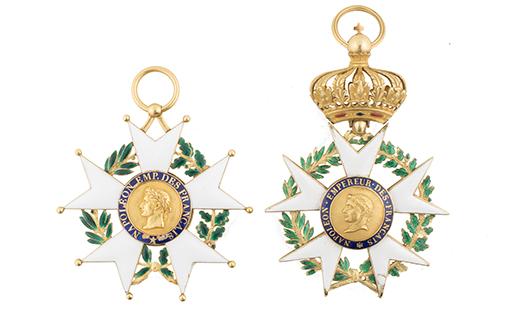
Empire era
These two great eagles reflect the imperial epic. The one of Lannes, who died after his legs were shattered by a cannonball at Essling, was presented to him by the Emperor on February 11, 1805. The one of Ney, modified during the Restoration and then the Hundred Days, acquired a tragic value when it served as a piece of evidence at the trial of the marshal, who was executed by a firing squad for treason on December 7, 1815.
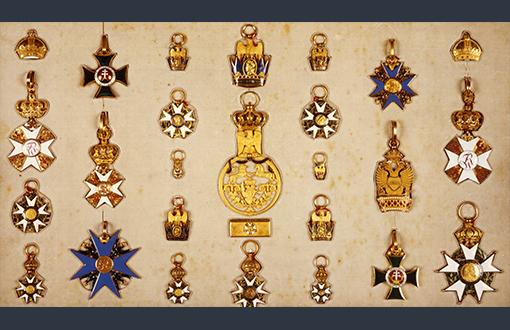
Legion of Honor, Crown of Iron, Royal Order of Westphalia, Prussian orders of the Red Eagle and the Black Eagle, Order of Saint Stephen of Hungary
Entrusted with the highest civilian functions, the Archichancellor appreciated honors and ordered jewelry of exceptional quality from the greatest jewelers, such as Biennais and Coudray.
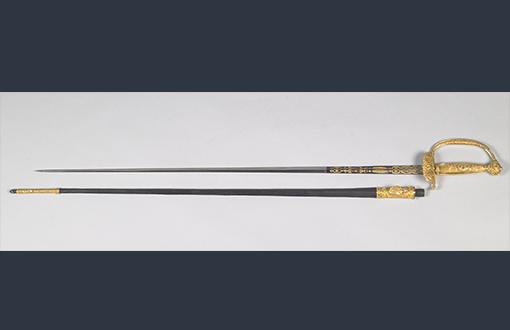
Martin-Guillaume Biennais (1764-1843), 1806
This sword was presented by Napoleon I to Alexander I of Russia in their meeting at Erfurt, which sealed the alliance of the two men. The tsar is said to have declared on receiving it: "I accept it in testimony of your friendship. Your Majesty may be assured that I shall never draw it against you. "
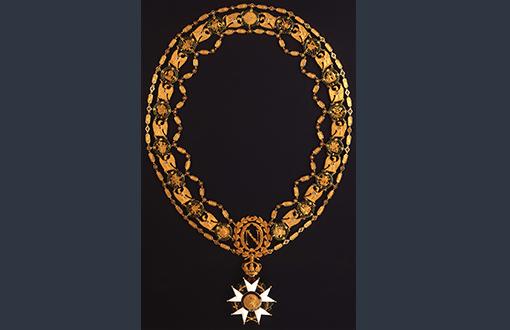
Martin-Guillaume Biennais (1764-1843)
Not established by statute, the collar of the Legion of Honor was worn under the First Empire by the Emperor, the princes of his family and a few very high dignitaries. The chain, with alternating imperial eagles and medallions illustrating the lofty activities of the nation (11 of them civil and 5 military), symbolizes the universality of the Order.
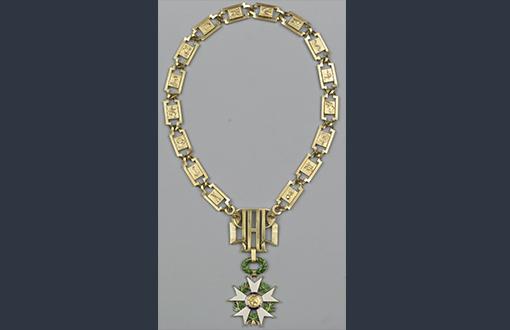
Arthus-Bertrand, after Raymond Subes (1893-1970) and André Arbus (1903-1969), 1953
The Grand Chancellor presents this attribute of the office of Grand Master, the collar of the Legion of Honor, to the President of the Republic on inauguration day. The links symbolize the activities of the Nation. The names and first date of office of the presidents, starting from Vincent Auriol, are engraved on the reverse side.
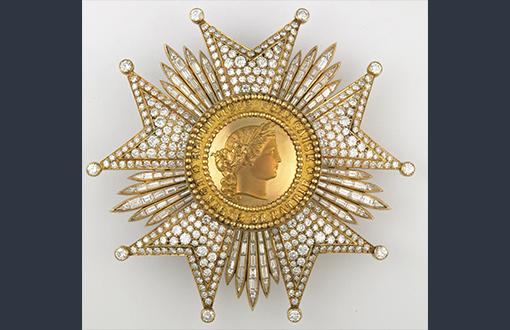
Van Cleef & Arpels
Beyond its sparkling beauty, this masterpiece of French jewel-making testifies to the importance that the Legion of Honor continues to hold in French society. This is a private order carried out at the request of the airframe manufacturer Marcel Dassault, who in 1956 was promoted to the honor of Grand Cross.
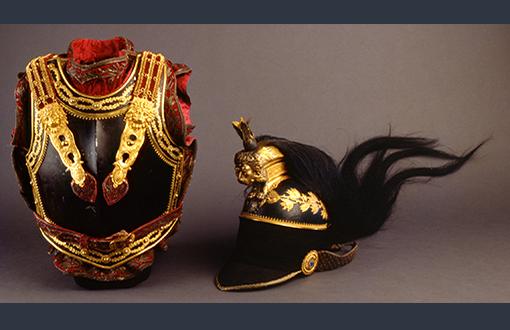
Parade breastplate and helmet of Napoleon I, 1807
Napoleon intended to equip his marshals with parade armors. Two prototypes were delivered, for the Emperor and marshal Berthier, shortly after the victory of Friedland in June 1807. The plan was not carried out and the two breastplates remained in Berthier’s possession.
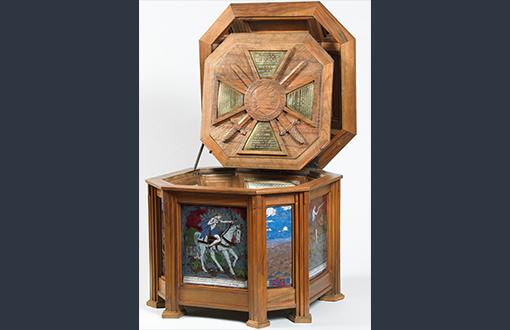
Enamels signed Lucien Emile Porcheron (1876-1954)
This astonishing family monument to the dead, with the theme of the horsemen of the Apocalypse, was ordered by Jane Tuleu to commemorate the sacrifice of her four brothers, killed in the space of 22 months from 1914 to 1916. On the inside cover, each branch of a Cross of War bears the names, dates and military citation for each of them.
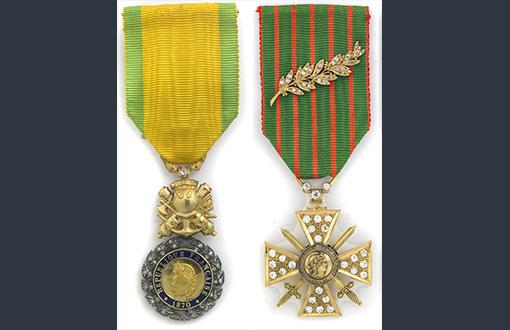
Military Medal and Cross of War of marshal Foch (1851-1929)
Along with the Legion of Honor, the Military Medal and Cross of War formed a real trilogy of sacrifice and glory during the First World War. These two insignia of precious manufacture, offered after the war to marshal Foch, testify to his immense popularity.
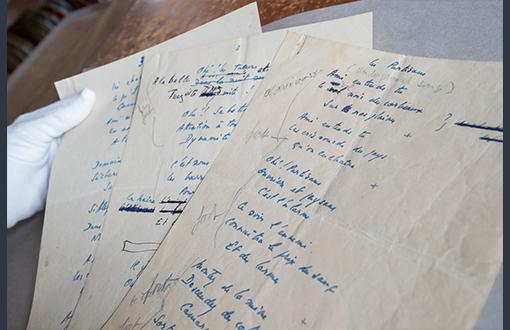
Manuscript of the Chant des Partisans, 1943
The Chant des Patisans (Song of the Partisans) is the anthem of the Resistance. It was composed in a suburb of London on May 30, 1943, by Joseph Kessel and his nephew Maurice Druon, to music by Anna Marly. After the three pages were written out, Kessel said to his nephew, who was holding the pen: "It may be, of the two of us, all that will remain".
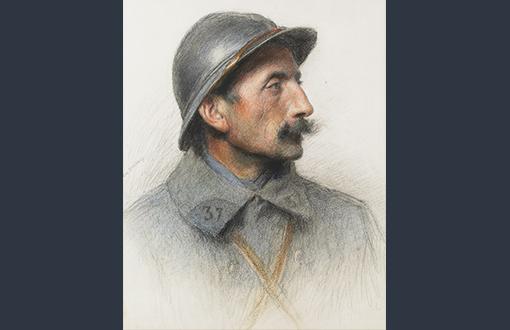
Eugene Burnand (1850-1921)
More than a simple gallery of military portraits, this is a psychological study of soldiers returned from the front, emphasizing the diversity of the peoples participating in the allied armies.
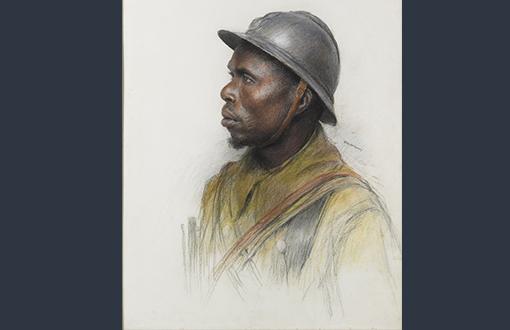
The allies in the War of Nations, portraits of soldiers
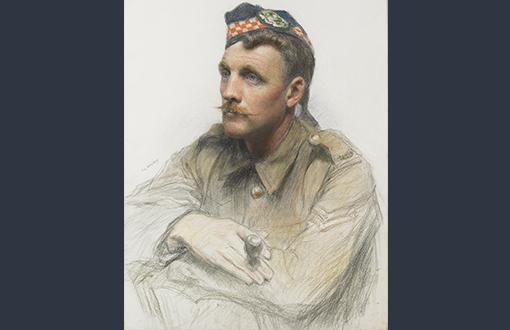
The allies in the War of Nations, portraits of soldiers
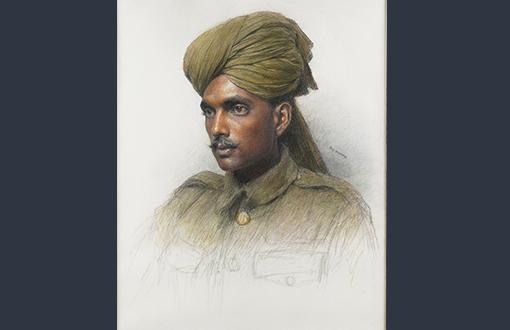
The allies in the War of Nations, portraits of soldiers
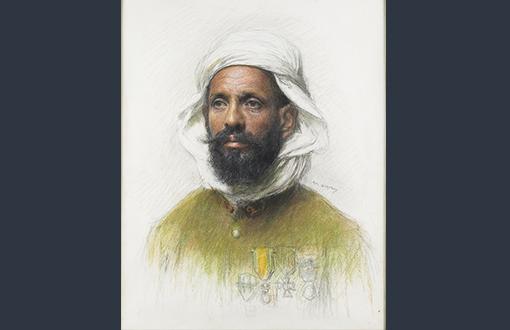
The allies in the War of Nations, portraits of soldiers
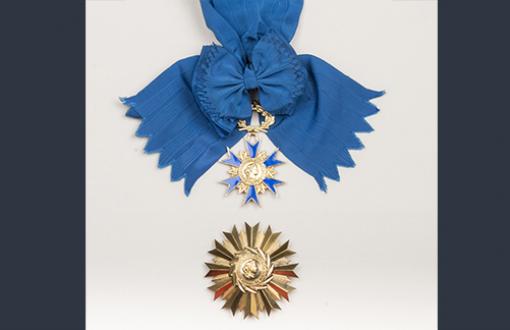
Founder of the National Order of Merit in 1963, general de Gaulle was personally involved in the creation of the second national order. He approved the first insignia, drawn by Max Léognany and manufactured by the Paris Mint.
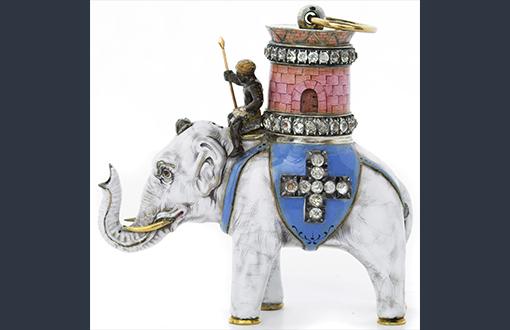
Deemed chaste and pure, the white elephant has been considered since the Middle Ages as a Marian symbol. Therefore it was chosen as the emblem of the most prestigious of the orders of chivalry of Denmark, founded in the 15th century and still awarded in our day.
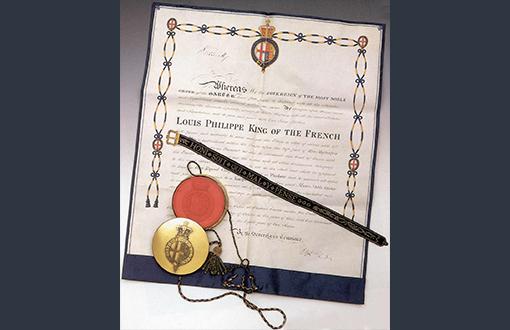
Certificate of the Order of the Garter of King Louis-Philippe I, King of the French (October 11, 1844) and garter
Louis-Philippe was admitted in the Most Noble Order of the Garter by Queen Victoria during his stay in Windsor in the fall of 1844. The young queen personally attached to his left leg the symbol of the Order: the velvet garter embroidered with the famous motto, Honni soit qui mal y pense (Shame be to him who thinks evil of it).
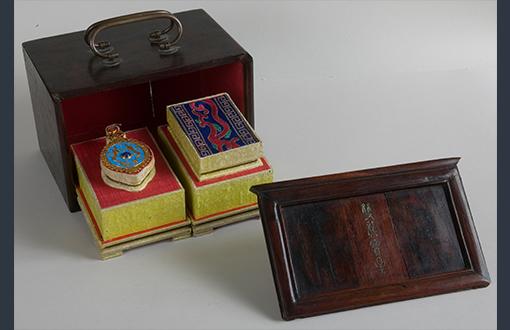
Insignia of the Chinese Order of the Double Dragon
Presented in its original box, this badge was awarded on March 13, 1889, by the Emperor of China to a French industrialist, Augustin Seguin (1841-1904), who had installed in the garden of the summer palace in Beijing a small railway intended to promote this mode of transportation in China.























